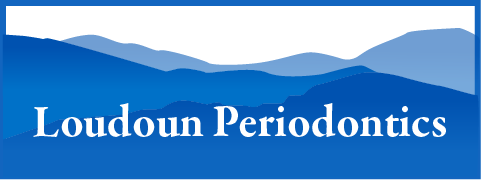Gum Grafting
Gum grafting is typically recommended to prevent further gum recession or to cover root surfaces of teeth that have become exposed. Left untreated, gum recession can result in cavities, severe gum disease, tooth mobility, and even eventual tooth loss.
Frenectomy
Frenectomy reduces pull on the gum tissues from fibrous attachments to the lip. This lessens the risk of developing or worsening recession defects and can also help stabilize tooth position following orthodontic treatment.
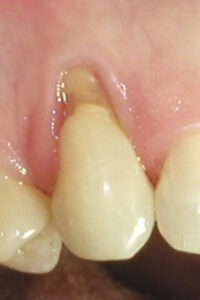
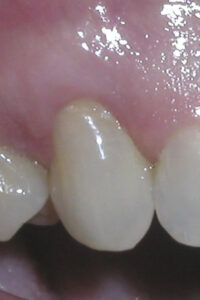
Before and After Gum Grafting
Key Benefits of Gum Grafting
- Reduced Tooth Sensitivity: Gum grafting covers exposed tooth roots, significantly decreasing sensitivity to hot and cold temperatures.
- Improved Oral Health: By protecting tooth roots from decay and further recession, gum grafting helps maintain overall oral health and prevents future complications.
- Enhanced Smile Aesthetics: The procedure restores a more balanced and attractive gum line, improving the overall appearance of your smile.
- Prevention of Bone Loss: Gum grafting helps maintain the supporting bone structure, reducing the risk of tooth loss in the long term.
- Increased Confidence: With improved gum health and aesthetics, many patients experience a significant boost in self-esteem and willingness to smile.
The Evaluation Stage
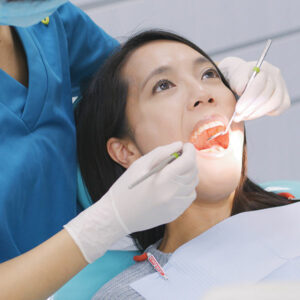
What to Expect During Consultation
When you visit our office for a gum grafting consultation, our skilled periodontist will conduct a thorough examination of your gums and teeth. We’ll assess the extent of your gum recession, evaluate your overall oral health, and discuss any symptoms you may be experiencing, such as tooth sensitivity or cosmetic concerns. This comprehensive evaluation allows us to determine if gum grafting is the most appropriate treatment for your specific case.
During this appointment, we’ll explain the gum grafting procedure in detail, discussing the different types of grafts available and which would be most suitable for your needs. We encourage you to ask questions and share any concerns you may have about the procedure or your oral health. Our team will work with you to develop a personalized treatment plan that addresses your unique situation and helps you achieve optimal gum health and smile aesthetics.
The Treatment Process
What to Expect During the Treatment
Gum grafting is typically performed under local anesthesia to ensure your comfort throughout the procedure. Depending on your specific needs, our periodontist will carefully harvest a small amount of gum tissue from another area of your mouth (usually the palate) or use donor tissue. The graft is then precisely positioned over the area of recession and secured with small sutures.
The procedure usually takes about 1-2 hours, depending on the number of teeth being treated. Throughout the process, our team will ensure you’re comfortable and informed about each step we’re taking. We use minimally invasive techniques whenever possible to promote faster healing and minimize post-operative discomfort. In some cases, we may recommend using advanced regenerative materials to enhance the results of your gum graft.
Before and After Examples
Gum Grafting
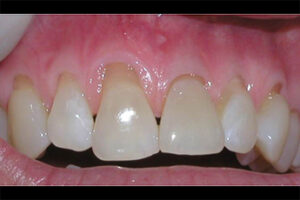
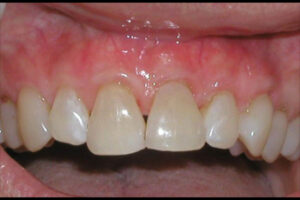
Frenectomy
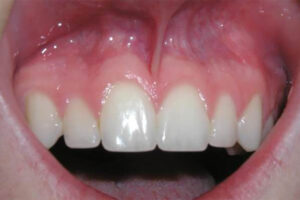
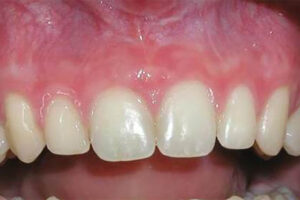
Recovery and Aftercare
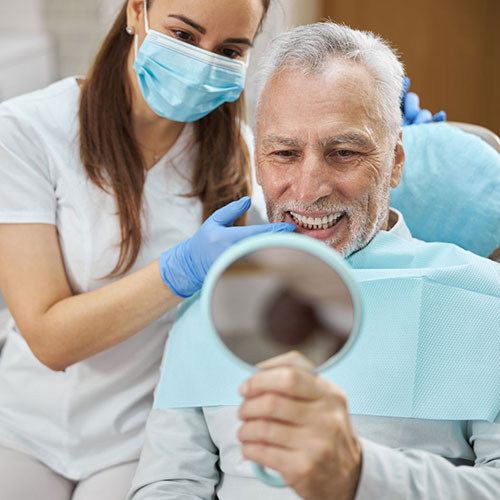
What to Expect for Recovery
Recovery from gum grafting is generally straightforward, with most patients experiencing minimal discomfort. You may notice some swelling and tenderness in the treated areas for a few days following the procedure. We’ll provide you with detailed aftercare instructions to manage these symptoms and promote optimal healing. Over-the-counter pain relievers and cold compresses can help alleviate any discomfort.
For the first week or two after the procedure, it’s important to follow a soft food diet to avoid disturbing the grafted area. We’ll recommend specific oral hygiene practices to keep the surgical site clean while it heals. Most patients can return to their normal activities within a day or two, although we advise avoiding strenuous exercise for about a week to ensure proper healing.
The initial healing process typically takes about two weeks, during which time you’ll notice the graft beginning to blend with your natural gum tissue. However, it may take several months for the graft to fully heal and for the final results to be visible. We’ll schedule follow-up appointments to monitor your healing progress and ensure the graft is integrating properly.
Many patients report a significant improvement in tooth sensitivity and gum appearance within the first month after the procedure. As healing progresses, you’ll notice a more balanced and healthier-looking gum line. It’s important to maintain good oral hygiene practices and attend regular periodontal maintenance appointments to sustain the results of your gum graft and prevent future recession.
